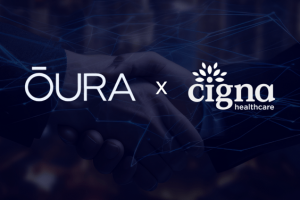The Health and Human Services Department hopes to carry on the initiative with its most recent Federal Health IT Strategic Plan, which followed its prior one.
With its most recent plan, which spans the next six years, the Health and Human Services Department hopes to carry on the work from its previous Federal Health IT Strategic Plan. The public can now provide feedback on HHS. The goal of officials is to keep enhancing the availability and interchange of electronic health data. They also have a few fresh objectives in mind. On the Federal Drive with Tom Temin, Eric White of the Federal News Network had the opportunity to chat with Dustin Charles, a Policy Specialist in the Office of the National Coordinator for Health Information Technology, a representative of HHS.
Transcript of interview:
Eric White Indeed. Why don’t we just take a quick look at the government health IT strategic plan from 40,000 feet and hear briefly about the goals and contents of this most recent update?
Dustin Charles Our government Health IT purpose is to use accessible health information and technology at the right time and place to improve people’s health and well-being as individuals and as a community. Our goal is to create a health system that leverages health information to improve population and individual health, cut health care costs, and involve people. Therefore, we really wanted to concentrate on enhancing the experience and results for individuals who use and are touched by health it when we were developing this edition of the strategic plan. As you can see from the strategy, we have defined the targets according to the various categories of health IT users. Therefore, the first goal is to address the needs of people, groups, and communities to those who are involved in the delivery of health care, such as patients, caregivers, providers, public health experts, and other professionals in the field. The third goal is to concentrate on health IT research and development, and to eventually pursue the infrastructure required to meet the other objectives.
Eric White You mean the health IT infrastructure, which is typically the largest problem, when you say “health infrastructure”? The reason for this is that many of these locations—hospitals and doctor’s offices, for example—were not designed to facilitate this kind of communication or to update their technology on a regular basis. What what is said in this new plan to deal with that?
Dustin Charles Have we completed these plans? Therefore, the primary goal of the previous programs was to encourage clinicians to use electronic health record systems, with a special emphasis on the adoption of new technologies. For instance, the following approach focused more on the exchange. Furthermore, the current approach we have is mostly focused on removing obstacles to communication and guaranteeing our ability to acquire health information. We are therefore aiming a little bit more widely outward with this plan. Although we have achieved significant progress in exchange, there are still certain roadblocks and emerging charging technologies. As we proceed over the following six years, we want to make sure that are taken care of in this strategy. Thus, it essentially involves analyzing the progress we’ve made and asking, “Well, where are some of the gaps that still need to be filled and what new issues need to be addressed?”
Eric White Yes. Can we revert to the original schedule? What advancements did you guys notice in the use of that one? And you know for sure which ones you guys are most pleased with?
Dustin Charles Among the things of which we are most proud are some of the advances. We have something called the TEFCA in return. Without a doubt, one of them is the framework for national interchange. The Fire standards, which function similarly to the HL7 FHIR standards, are the other side of the exchange that gives providers a common means of exchanging electronic health information. It also pleases us to note that several hospitals are specifically APIs. Therefore, they use not only FHIR APIs but also some custom-built APIs that they have developed themselves. Thus, the use of a lot of the produced technology—especially that pushed by the federal government—has advanced significantly in the health IT field as a whole.
Eric White Dustin Charles is our conversation partner. He works as a policy specialist for the Department of Health and Human Services’ Office of the National Coordinator for Health Information Technology. Let’s return to the actual plan now. For this activity, you guys collaborated with a ton of additional partners. Could you briefly explain the involvement that a few other agencies had in the creation of this new policy?





















